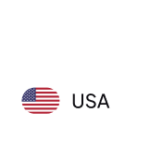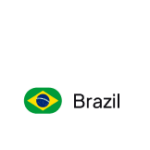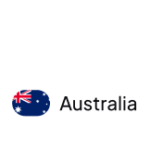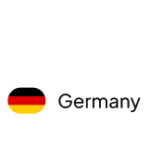Number plates are more than just vehicle identification tags. They’re a symbol of individuality and style. Combinations like “0000” or “1111” stand out and add an exclusive flair, often making the vehicle look more premium. This uniqueness is exactly what drives up their value. People frequently experiment with different fonts and colors to make their number plates get those second glances as they drive past people. But is there a limit? After all, beyond being a personal style statement, a number plate is a legal identifier, so how far can creativity go?
While number plates can be a style statement, they are also legally binding identifiers regulated by strict government standards, especially in the UK. Every detail must comply with official guidelines, from font type to color schemes. Whether you’re curious to know the number plate rules in UK or are a new vehicle owner about to craft one, this blog is going to be an informative one for you.
How Do UK Number Plates Work?
Before we discuss the intricacies of UK vehicle number plates, let’s first consider the significance of each character on the license plate.
- The first two letters (AA) of the local memory tag indicate the region where the car was first registered (e.g., “LD” = London).
- Two numbers (NN): Age identifier – shows when the car was registered.
- Last three letters (AAA): Random – unique to the vehicle.
Legal Number Plates
Legal number plates in the UK must strictly follow the number plate regulations UK set by the Driver and Vehicle Licensing Agency (DVLA) to ensure uniformity, readability, and road safety. These UK car number plate regulations are designed to make number plates easily identifiable by humans and automated systems, , such as ANPR (Automatic Number Plate Recognition) cameras.
In addition, legal number plates must pass the MOT (Ministry of Transport) test, which checks if the plate is securely attached, clearly visible, and not damaged or obscured. A plate that fails to meet these standards could result in:
- An MOT failure
- Fines up to £1,000
- Vehicle registration issues
By meeting all these government-mandated requirements, legal number plates ensure clarity, compliance, and consistency across all UK vehicles.
Rules for Number Plates in UK
Legal number plates in the UK must adhere to strict regulations set by the Driver and Vehicle Licensing Agency (DVLA). Here’s a simplified checklist for you to ensure before you get your number plate made. This is a comprehensive list that covers almost every tiny detail of the UK guidelines:
1. Make and Character: The number plate must be made from reflective material and display black characters on a white background for front plates, and black characters on a yellow background for rear plates.
- Background: They should have no background images or tinting, primarily for better visibility and clarity.
3. British Standard Marking: All legal number plates must show a British Standard code:
– ‘BS AU 145e’ for plates made after 1 Sept 2021
– ‘BS AU 145d’ for plates made before that date
4. Supplier Details: Plates must show the name and postcode of the supplier who made or sold the plate. - Font Rules: The font used must be the standard Charles Wright typeface. The size and spacing of the characters must meet legal rules. The set height, width, and space between characters are required. Here are the exact figures for you:
Character Size and Spacing for Standard Number Plates (Cars and Vans)
- Character Height: 79 mm
- Character Width: 50 mm (except for the number ‘1’ or letter ‘I’ which are naturally narrower)
- Stroke Width (thickness of the black lines): 14 mm
- Space Between Characters: 11 mm
- Space Between Character Groups (between the two letters and the numbers): 33 mm
- Top, Bottom & Side Margins: At least 11 mm
For Motorcycles and Tricycles:
- Only one plate is required at the rear.
- Character Height: 64 mm
- Character Width: 44 mm
- Stroke Width: 10 mm
- Character Spacing: 10 mm
- Group Spacing: 30 mm
Legal Number Plate Styles
When it comes to legal number plates in the UK, you actually have quite a few style choices, as long as they follow DVLA rules. Here’s a look at some popular options:
4D Plain Plates
These plates feature raised, laser-cut letters made from solid acrylic. They sit on a flat base and have a clean, modern look. While they stand out more than standard plates, they must still follow all the legal requirements, like using the correct font, size, and spacing, to stay road legal.
4D Matte Plates
Just like the standard 4D plates, these also have raised letters, but the finish is matte (non-glossy), giving them a subtle and classy appearance. The background still has to be reflective by law. If the matte effect blocks the number or makes it harder to read, the plate is considered illegal.
5MM / 5MM Gel Plates
These take the 4D design up a notch. The letters stick out around 5mm and have a shiny, gel-like look. They’re bold and eye-catching, but because of the extra thickness, they must be fitted properly so they don’t cause issues with your car’s structure. If they’re too bulky or poorly attached, they could be illegal.
Pressed Plates
They give a classic feel, especially popular with vintage cars. As long as they use the correct colors (white at the front, yellow at the back), font, and reflectivity, they’re totally legal for use on UK roads.
Shaped Plates
Shaped plates are custom-made to fit the design of specific car models. They curve to match the vehicle’s body, making everything look more streamlined. These plates are perfectly legal and MOT-friendly—just as long as they meet all the DVLA rules on character size, spacing, and visibility.
Illegal Number Plates
Sometimes, creativity goes beyond limits set by the government standards. Negligence or sometimes taking rules leniently can cause trouble like invalidation of car insurance, registration number withdrawal or heavy fine upto 1000 pounds. So, it’s important that we mention all the possible ways in which people commonly violate the rules:
Sure! Here’s a refined and more engaging version of the list, using clear and reader-friendly language:
- Altered Spacing
Changing the spacing between letters and numbers to spell out names or words is illegal. Number plates must follow the official layout with no manipulation. - Wrong Font
Only the ‘Charles Wright 2001’ typeface is allowed. Any use of fancy, decorative, or non-standard fonts makes the plate illegal. - Incorrect Colours
Front plates must have black characters on a white background, and rear plates must have black on yellow. Any other colour combination breaks the law. - Removable or Reflective Letters
Characters must be fixed in place and non-reflective. Plates with removable or shiny, mirror-like characters are not legal. - Decorative Backgrounds
Plates must have a plain background. Patterns, textures, or any kind of images behind the characters are strictly prohibited. - Unapproved Graphics
Only specific flags or identifiers (like the Union Jack, GB, or UK) are allowed. They don’t permit logos, symbols, or images. - Misusing Registration Numbers
You cannot display a number plate that doesn’t belong to the vehicle or alter characters to disguise the true registration. This is a serious offence.
3D and 4D Number Plates
Enough of setting rules and boundaries. Now, let’s focus on the cool ways you can play around with your number plate styles while still following the rules. 3D and 4D license plates are cool and creative ways you can make your licence plates stand out.
Sure! Here’s a fully reworded and simplified version with a more engaging tone:
3D Number Plates: What Makes Them Special
3D plates feature slightly raised black characters that give the plate a subtle, stylish texture without breaking any rules. Legal under new UK number plate rules.
- Letters and numbers typically rise 1–3mm above the plate surface
- Made by layering acrylic over a standard reflective background
- Fully legal in the UK when produced to DVLA standards
4D Number Plates: A Bold Upgrade
4D plates take the raised letter design even further, offering a bold, standout look with deeper characters and optional coloured detailing.
- Characters usually extend 5mm or more above the surface
- Built with thick, laser-cut acrylic, often giving a gel-like finish
- May include coloured accents (if they meet legal guidelines)
- Offer a more striking, high-contrast effect than 3D plates
Rude Number Plates in 2025: Full DVLA Banned List & Why They’re Rejected
Don’t scrunch your eyes at “rude number plates”. How can number plates be rude? Well, they can be. Vulgarity has spread its roots in a good number of domains, and sadly, number plates could not remain untouched. From sly political jabs to barely disguised obscenities, some drivers just can’t resist turning their plates into a rebellious badge of so-called “cool.” So, here’s a list of the banned number plates in 2025 and the reasons for the same.
- Offensive or obscene language: Plates that can be interpreted as rude or vulgar. Ex.- BA25ARD
- Sexual references: Combinations implying explicit content. Ex.- PU25SYY
- Political or religious sensitivity: References to contentious political issues or religious sentiments. Ex.- EU75WAR
- References to violence or crime: Plates suggesting criminal behavior or violence. Ex.- LE75KLL
5. Drug-related terms: Combinations alluding to illegal substances. Ex- LE75LSD - Discriminatory language: Plates that could be seen as racist, sexist, or homophobic. Ex- WR68WRM (White Regime)
7. Misleading or confusing combinations: Plates that could be mistaken for official or emergency services. Ex.- PO11ICE
Steps to Get Your New Number Plates
After you’re done using a number plate maker to craft your unique number plate. Here are the steps to get your new number plates in the UK, whether you’re buying a standard plate or a personalized/private registration:
1. Choose Your Registration Number
- Visit the DVLA website or an approved private number plate dealer.
- Use the search tool to find available personalised plates.
- Make sure the registration follows DVLA rules (no offensive, misleading, or inappropriate content) and matches your vehicle’s age (you can’t make a car look newer than it is)
Ensure the plate follows DVLA’s new number plate rules UK and matches the vehicle’s age.
2. Buy the Registration Number
- Pay for the registration number online through DVLA or a trusted reseller.
- You’ll receive a Certificate of Entitlement (V750) if it’s a new registration.
- If transferring from another vehicle, you’ll get a Retention Certificate (V778)
3. Assign the Number Plate to Your Vehicle
- Visit the DVLA Assign a Private Number online service
- Enter details from your V5C log book (vehicle registration certificate) or V750/V778 certificate
- The system updates in real-time or within 24 hours
4. Make Physical Plates
- Use a DVLA-registered number plate supplier
- Bring proof of your identity (e.g., driving licence) and vehicle entitlement (e.g., V5C or V750)
5. Fit the Plates to Your Vehicle
- Install the plates securely on your car (front and rear).
- Ensure they meet DVLA specifications for font, spacing, color, and size and has no background images or decorative logos.
Ensure compliance with number plate regulations UK, including size, spacing, and no decorative elements.
6. Inform Your Insurance Company
- Let your insurer know you’ve changed the registration.
- This ensures your insurance policy reflects the correct plate.
Conclusion
Getting new number plates in the UK, whether standard or personalised, is straightforward when you follow the right steps. From choosing your ideal registration number to having it legally assigned and fitted to your vehicle, each stage is designed to comply with new UK number plate rules while still allowing room for personal expression. Remember to use approved suppliers, follow the UK license plate rules, and notify your insurance provider. With the right preparation, you’ll be driving away with fully compliant, stylish, and uniquely yours plates. Be creative but always within the bounds of number plate rules UK.















